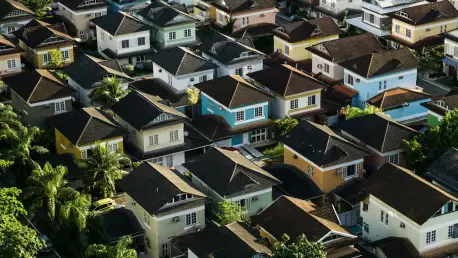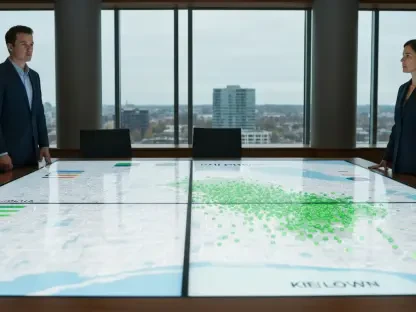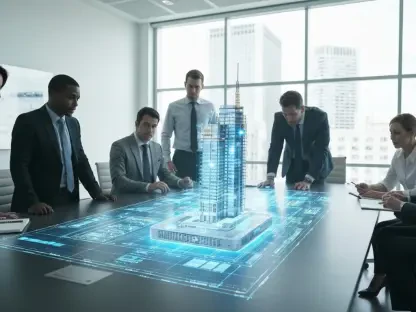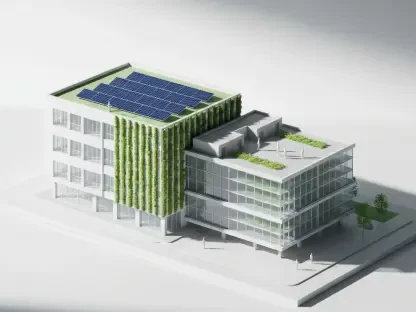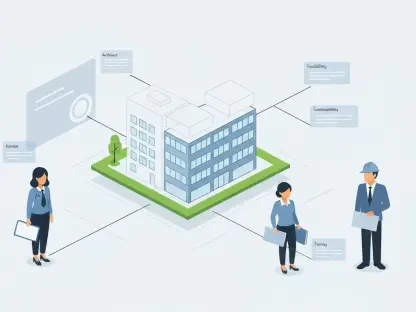London faces a housing crisis of significant proportions as it struggles to meet the growing demand for affordable homes. This challenge has been exacerbated by rising rental costs and a shortage of living spaces, a situation that has strained the capital’s resources and heightened discussions around potential solutions. Mayor Sadiq Khan’s recent proposal to utilize select areas of the city’s green belt for housing development marks a notable pivot from previous strategies that relied exclusively on brownfield sites. This move underscores the administration’s urgency in addressing these persistent issues and highlights the need for innovative urban planning approaches.
Understanding the Green Belt Shift
Rationale Behind Reconsidering Green Belt Land
The proposal to develop parts of the green belt, typically regarded as a sacrosanct environmental buffer, highlights a strategic shift in land use policy designed to address London’s pressing need for housing. Sadiq Khan aims to identify low-quality, underutilized areas within the green belt, often labeled as “grey belt,” that do not contribute significantly to the city’s ecological footprint or public recreation space. The shift rests on the rationale that preserving underused land while simultaneously grappling with a housing shortfall is neither sustainable nor practical.
Statistics show that the current approach of focusing solely on redeveloping brownfield sites has proven insufficient. The city delivers about 40,000 new homes annually, falling well short of the targeted 88,000 needed to accommodate the growing population. Rising rental prices—a notable 11.5% increase last year—and escalating rates of homelessness further illustrate the urgency of the situation. These challenges drive councils to spend a substantial £4 million daily on temporary accommodation. Khan’s proposal thus seeks to pivot from tradition, addressing demographic and economic realities by leveraging all possible avenues to rectify the housing imbalance.
Strategic Development Conditions
Khan’s proposal is not a carte blanche for reckless development; rather, it emphasizes strategic, condition-based expansion. Any development on identified grey belt land would need to adhere to strict standards, ensuring that new housing is both affordable and energy-efficient. Additionally, accessibility to transport and proximity to parks are key factors for any planned developments, thereby maintaining a balance between infrastructural growth and quality living standards.
The proposal acknowledges that only a small fraction—13%—of the existing green belt serves as accessible public parks. This statistic suggests that vast expanses remain unutilized or are of minimal public use. By rethinking these spaces, the city unlocks the potential to address the housing crisis while preserving the essential environmental contributions of more vital green belt areas. This nuanced approach has garnered support from key stakeholders, including Deputy Prime Minister Angela Rayner and London Councils chairwoman Claire Holland, both recognizing the plan as a necessary evolution in urban strategy. Their backing underscores the political acknowledgment of the proposal’s long-term value.
A New Path Forward
Balancing Housing Needs and Environmental Preservation
While Khan’s plan has received substantial support, it also invites discourse on the sustainability of urban expansion and its effects on the environment. This conversation repeats a broader global dialogue regarding urbanization and ecological considerations. Proponents argue that the careful development of seldom-used green belt segments offers a balanced solution, allowing the city to grow without compromising key environmental assets. This approach reinforces the idea that sustainable urban development can be an avenue for both ecological preservation and the fulfillment of human needs.
Engaging with this complexity, Khan’s administration plans to employ comprehensive assessments to ensure that any development aligns with environmentally respectful practices. This dual focus on housing and preservation illuminates a forward-thinking strategy that aims to secure both immediate and future urban prosperity. Additionally, by selectively focusing on grey belt areas, the proposal seeks to minimize ecological disruption while actively contributing to public welfare through improved housing availability. The broader goal is to cultivate a more resilient, adaptive city landscape that meets its citizens’ evolving needs.
Stakeholders’ Role and Future Implications
The proposal’s successful implementation depends on effective collaboration among various stakeholders, including local councils, developers, environmentalists, and the public. The involvement of groups like Generation Rent, which advocates for tackling housing poverty and homelessness, highlights the initiative’s potential to stimulate meaningful dialogue around sustainable urban living. By considering diverse perspectives and fostering a transparent planning process, stakeholders can harness the plan’s potential to produce a well-rounded urban environment.
As the conversation around developing London’s green belt evolves, there is a critical opportunity to redefine urban growth boundaries. This redefinition could guide future housing policies, impacting similar metropolitan areas facing housing crises. By employing innovative planning strategies and adopting flexible policies, cities globally can learn from London’s pioneering efforts. This approach fosters a balanced ecosystem where economic growth, urban development, and environmental sustainability coexist harmoniously, guiding future metropolitan transformations.
Future Prospects and Actionable Insights
London is grappling with a severe housing crisis, struggling to meet the increasing demand for affordable living options. The city is under strain due to soaring rental prices and a glaring shortage of available housing units, pressing resources to their limits and fueling intense debates on potential remedies. In a significant shift from earlier approaches that focused exclusively on brownfield sites, Mayor Sadiq Khan suggests tapping into areas of the city’s green belt for residential development. This plan highlights the administration’s urgency to tackle these ongoing challenges and emphasizes the need for creative urban planning strategies. The idea of using green belt spaces, traditionally protected from development, marks a substantial departure from established practices and underscores how critical the issue has become. London must explore innovative strategies to ensure adequate housing. The discussions around this proposal reflect the urgent necessity to balance preservation with progress as the city seeks growth amid space constraints.
